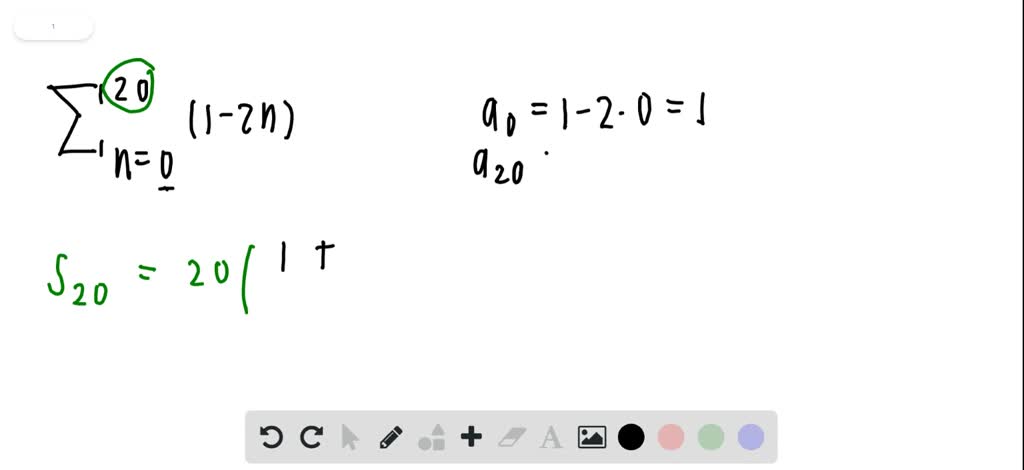

But since ,Ĭonsequently, it is easy to get the sum of an arithmetic sequence from up to, if both of them are given.

Take note that the preceding formula can be expanded to. Therefore, the sum of the generalized arithmetic sequence is given by the formula If we add each pair, the sum is alwaysīut we have terms in the sequence which means that there are pairs.
#Sum of arithmetic sequence series
If we use Gauss’ strategy in finding the sum of the generalized arithmetic sequence, pairs with, will pair with, and so on. We can transform a given arithmetic sequence into an arithmetic series by adding the terms of the sequence. Their generalized form are shown in the third column. Continuing this pattern, we can see the complete terms the second column in the table below. For example, to get the second term, we have 7 + (1) 6, and to get the third term, we have 7 + 2(6). Now, how do we generalize this observation?įirst notice that to get the terms in the sequence, the multiples of the constant difference is added to the first term. Observe that the sequences has 8 terms and we have 8/2 = 4 pairs of numbers with sum 60. If we add the 1st and the 8th term, the 2nd and the 7th term, and so on, the sums are the same. Recall that in adding the first 100 integers, Gauss added the first integer to the last, the second integer to the second to the last, the third integer and the third to the last and so on.Īs we can see, this strategy can be applied to the given above.

We take the specific example above and use Gauss’ method in finding the sum of the first 100 positive integers.
#Sum of arithmetic sequence how to
In this post, we derive the formula for finding the sum of all the numbers in an arithmetic sequence. How to find the sum of an arithmetic sequence Flexi Says: The general formula for the sum of the arithmetic series is given by: S n 1 2 2 a + ( n 1 ) d. You have learned in that the formula for finding the nth term of the arithmetic sequence with first term, and constant difference is given by However, to me this still doesn't explain why the derivation decides to add the two sequences.Is an example of an arithmetic sequence with first term 7, constant difference 6, and last term 49. So possibly it could be said by induction that if for any arithmetic sequence it is true that: In my attempt to figure this out I noted that by studying many sequences we can see that the ratio of the sum of the sequence for the first $n$ terms $S_n$ and the sum of the first and last terms $(a_1 + a_n)$ is always $\frac$ for any arithmetic sequence. Why were the two sequences added to derive the formula and what does that show about the nature of arithmetic sequences? It makes sense to me that they were added but not why this was the next logical step when deriving the formula. Unfortunately I can't seem to find the reasoning in any of these explanations as to why the two sequences (ordinary order and reverse) were added.


 0 kommentar(er)
0 kommentar(er)
